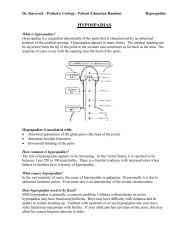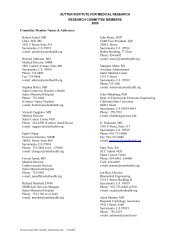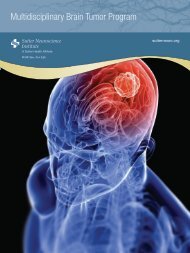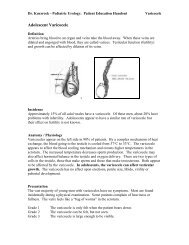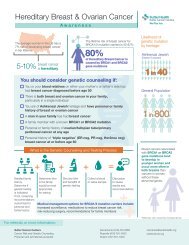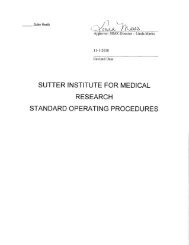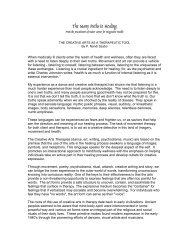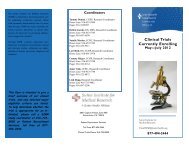Sutter Institute for Medical Research 2008 Annual Report
Sutter Institute for Medical Research 2008 Annual Report
Sutter Institute for Medical Research 2008 Annual Report
Create successful ePaper yourself
Turn your PDF publications into a flip-book with our unique Google optimized e-Paper software.
“The results were<br />
everything I had<br />
hoped <strong>for</strong>.”<br />
Robotic-Assisted Hip Surgery Restores the Spring in Her Step<br />
While there’s no discounting the many benefits of<br />
aerobic exercise, teaching aerobics classes <strong>for</strong> countless<br />
years eventually took its toll on Sharon’s left hip. “In<br />
the type of aerobic dancing I taught, every step began<br />
on the left side,” said Sharon. “Over time, the constant<br />
pressure on my left hip gradually wore down the joint<br />
cartilage until it was bone on bone. It got to the point<br />
that I couldn’t even walk without limping.”<br />
Sharon talked to people who had undergone hip<br />
replacement surgery and heard Dr. Bargar’s name<br />
mentioned so often that she decided he was the one she<br />
wanted to per<strong>for</strong>m her surgery. In February <strong>2008</strong>, she<br />
went to see William Bargar, M.D., <strong>for</strong> the first time and<br />
heard that the latest generation of the robotic surgical<br />
assistant Dr. Bargar had helped develop many years<br />
be<strong>for</strong>e would soon be tested in a clinical trial.<br />
Dr. Bargar explained that the system would allow him<br />
to use diagnostic images to assess Sharon’s hip anatomy<br />
and condition, select the best hip implant type and size,<br />
and determine its optimal placement. During surgery,<br />
the system would assist him again, this time in carrying<br />
out the plan and preparing the femur <strong>for</strong> implant<br />
placement to ensure the implant was set at the correct<br />
angle. Dr. Bargar’s experience in hip replacement,<br />
combined with his confidence in the improved accuracy<br />
the system would provide over manual surgery<br />
techniques, convinced Sharon to enroll in the clinical<br />
trial.<br />
“The results were everything I had hoped <strong>for</strong>,” said<br />
Sharon. “I didn’t even have to take pain medication<br />
after the surgery. Eight or nine days after the surgery, I<br />
was able to walk up and down the stairs at home. My<br />
physical therapist said I could go down once in the<br />
morning and up again at night, and I was very careful<br />
to follow all instructions exactly, which I’m sure helped<br />
contribute to my results. My greatest fear was that the<br />
hip would pop out, but it settled right in and healed<br />
beautifully.”<br />
Today Sharon does not enjoy pain-free hips, however.<br />
“I do a lot of walking, and I can honestly say that I’ve<br />
never felt any pain in my left hip,” Sharon said, “but I<br />
have arthritis in my right hip now — and that’s the only<br />
hip that ever hurts.”



